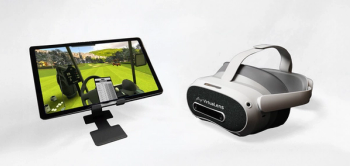
Surgeons eye letter-perfect outcomes with new extended depth of focus IOL
A study reviews the results, and patient satisfaction following bilateral implantation of an extended depth of focus intraocular lens.
Early data show generally positive outcomes following bilateral implantation of a new extended depth of focus (EDOF) intraocular lens.
A retrospective analysis of clinical and patient reported outcomes three month after bilateral implantation of the Zeiss AT Lara 829MP (
Most patients, 95.4 percent, were spectacle-free for distance vision and 83.6 percent were spectacle-free for near vision.
“This is the first cohort of patients who have had this lens implanted at Optical Express” said Julie M. Schallhorn, MD, MS, assistant professor of ophthalmology at the
RELATED CONTENT:
The study
The analysis includes all patients from September 2017 through September 2018 who returned for their one-week, one-month and three-month post-op visits. Dr. Schallhorn is senior author for an article published in the Journal of Refractive Surgery.
A longer term evaluation of both clinical and patient reported outcomes is currently under way. Dr. Schallhorn pointed out that while the AT Lara lens has not yet been ap-proved for use in the United States, it is currently approved for use in the European Union and other jurisdictions. It is a hydrophilic IOL with 25% water content and a hydrophobic surface.
The device has four-point haptic fixation, 6-mm optic diameter, 11-mm overall length and is available in a range of -10.00 to +32.00 D in 0.50 D increments. A toric version of the lens (AT Lara 929MP) is also available but was not used in this cohort. The AT Lara is based on a diffractive principle.
It is aspheric, aberration-neutral and chromatic aberration-correcting to provide a progressive visual field across three focal points: distance, 1.90 D for far-intermediate and 0.95 D for near-intermediate distances. All of the patients in the analysis had bilateral implantation with no prior history of refractive surgery and no ocular comorbidities other than refractive error or cataracts.
Most of the patients, 232 (79.2%) underwent implantation for refractive correction while 61 patients (20.8%) had cataracts, most often mild, with CDVA no worse than 20/32. The mean age of the cohort was 59 with a slight preponderance of men, 54 percent. The mean preop sphere was +1.50 D, mean cylinder was -0.51 D and the mean manifest spherical equivalent was +1.24 D.
RELATED CONTENT:
Performance
“With any new lens, you want to see how it performs in your average, everyday patient off the street,” Dr. Schallhorn said, “how they like it, how it is working for them. That’s why we did this retrospective evaluation.”
Three months after implantation, 86.7% of eyes were within ±0.50 D of emmentropia and 98.3% were within ±1.00 D of emmentropia. The mean MSE was -0.05 D with a coefficient of determination of 0.96. The mean prediction error, the difference between the predicted MSE and achieved MSE, as -0.07.
Most of the eyes, 90.8%, had monocular UDVA of 20/25 or better at three months and all eyes had CDVA of 20/25 or better. Just over half of eyes, 57.5%, had the same UDVA after surgery as the CDVA before surgery. Nearly all patients, 97.4%, had binocular UDVA of 20/25 or better.
Uncorrected near vision at 40cm was expectedly less than distance vision, Dr. Schallhorn said, as the EDOF lens has a near focal point of about 60cm. A solid majority of eyes, 84.6%, had monocular UNVA of 20/50 or better at three months and 91.6% had binocular UNVA of 20/50 or better.
No adverse events
There were no serious or unexpected adverse events associated with the lens. There were no explants during the first three post op months and no patients declined the AT Lara implant for their second eye.
Patient reported outcomes were generally very favorable. Two-thirds of patients (66.6%) completed a patient experience questionnaire at three months, down from 85% preoperatively and 69.6% at one month.
Most patients, 90.3%, said they were satisfied or very satisfied with their new vision, Dr. Schallhorn reported. Slightly more, 90.8%, said their vision at three months met or exceeded their expectations.
The most commonly reported visual symptoms during the first three months of follow up included glare, halo and starburst. There was an initial increase in severity of visual symptoms during the first month after implantation and a small but statistically significant decreases in symptoms between the one-month and three-month visits.
Experience with other EDOF lenses show that it can be difficult to accurately assess visual symptoms during the early post op months. Symptoms can be a factor of lens design but also due to post op inflammation, corneal edema, dry eye, superficial keratitis, refractive error and other causes. Longer term follow up with other EDOF implants suggest that continued improvement in visual symptoms may be expected.
“Patients like multifocal lenses,” Dr. Schallhorn said. “We have seen that in study after study. But multifocal lenses come with more symptoms We see a very good potential for this lens, but it will require careful patient selection and counseling in terms of near vision results and the potential for optical side effects.”
Disclosures:
JULIE M. SCHALLHORN, MD, MS
P: 415/476-2896
This article is based on Dr. Schallhorn’s presentation at the 2019 American Society of Cataract and Refractive Surgery annual meeting. Dr. Schallhorn has no financial disclosures to report.
Newsletter
Don’t miss out—get Ophthalmology Times updates on the latest clinical advancements and expert interviews, straight to your inbox.















































